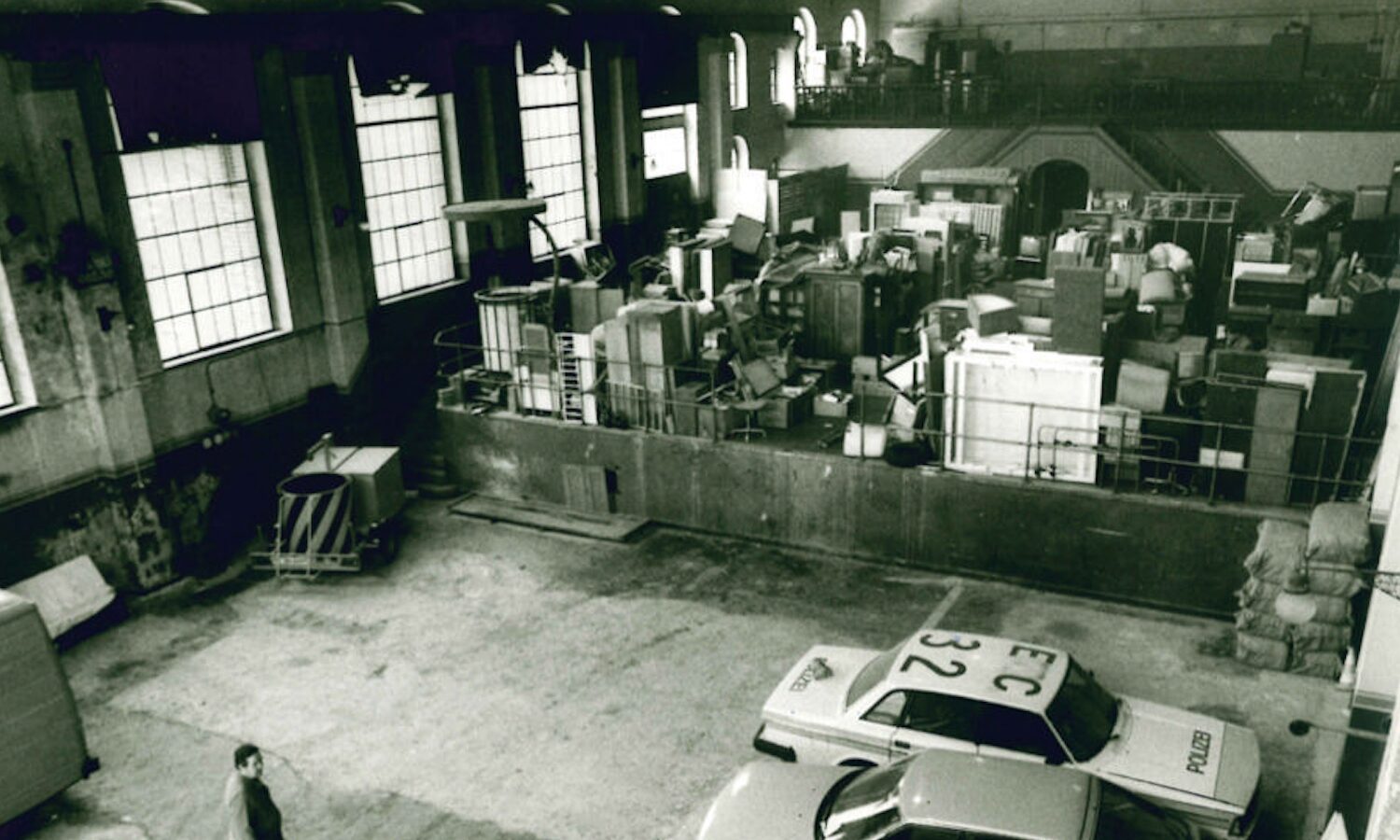History

How it all began
Dampfzentrale is located on the banks of the Aare River on the grounds of the Marzilibad. Its’ history begins in the early twentieth century. As the existing Matte hydraulic power station produced too little energy during low flow conditions to meet Bern’s rapidly growing demand for electricity, the architect Eduard Joos, who had made a name for himself with his design for the university’s main building on the Grosse Schanze, was commissioned by Bern’s electric company to design a thermal power station.
Coal was brought to Dampfzentrale Bern by ship from the region around Lake Brienz to fire the boilers in the boiler room and enable the three-phase turbines in the turbine hall to produce electricity. In 1924 diesel units were brought in to supplement the coal-fired boilers, and coal was phased out entirely in 1939. Dampfzentrale’s fifty-metre-high-smokestack, a city landmark, was torn down. When the diesel units were removed in 1973, the building lost its purpose and temporarily served as a storehouse. Proposals for creating new indoor swimming pools and sports halls were floated only to be abandoned again. The complex only escaped demolition by being declared a protected monument in 1981.
In the mid-1980s, only a modest range of cultural events was on offer in Bern, and there was a shortage of performance venues for the independent dance and theatre scene. The Reitschule was cleared out, and the squatters camp Zaffaraya had been levelled to the ground. The Association Dampfzentrale was created in 1986 with the goal of promoting Dampfzentrale Bern as a cultural venue, and the association submitted an application to the Bern local council. In May 1987 Dampfzentrale was occupied for one night, an event captured in the band Züri West’s song “Hansdampf”: “D Wäut schteit uf em Chopf u dräit sech überem Parkett, 1000 Bärner dräie mit u i schtah irgendwo ir Mitti, u cha nid gloube, was i gseh.” (“The world is upside down and spinning over the dance floor. A thousand Bernese are spinning with it and I’m somewhere in the middle. And I can’t believe what I see.”) What Kuno Lauener, Züri West’s front man, found it hard to believe really was a small miracle.
On 10 October 1987, the local council authorised a pilot plan for operations at the Kulturhallen Dampfzentrale and commissioned the architecture firm Haltmeyer + Flückiger with the renovation and repurposing of the listed industrial monument. Soon afterwards contemporary culture became a permanent fixture at Dampfzentrale Bern.
In 1997, after ten years of cultural events, Bern’s local council unanimously agreed to allocate CHF 4.1 million for renovations to Dampfzentrale. Haltmeyer + Flückiger adapted the renovation project developed in 1992 and carried out the overall renovation between September 1998 and August 1999. The work elevated the Kulturhallen Dampfzentrale to an entirely new level. The rooms retained their original character, but the technical infrastructure now met the needs of a modern cultural venue. Since then, cultural activities at Dampfzentrale have continued to expand in every dimension.
In September 2005, Roger Merguin and Christian Pauli took over the direction of the Kulturhallen Dampfzentrale. The Verein Dampfhalle tasked them with drawing up a new plan for Dampfzentrale as a centre for contemporary dance and music centre for the subsidy period 2008–2012. The Verein Dampfzentrale, previously an association of performing associations, welcomed members of the general public. After intense negotiations between Dampfzentrale and the city of Bern, the local council declared in the spring of 2007 that it would dramatically increase subsidies for 2008–2012. This meant that for the first time in its twenty-year history, Dampfzentrale now had sufficient funds at its disposal to develop its own programme and enhance its profile. Thus, the venue became a cultural centre for contemporary dance and music and the previous rental arrangement was now a thing of the past.
On 15 May 2011, the city of Bern voted for the first time on the future of Dampfzentrale Bern. Just under seventy-three percent of Bern’s voters voted yes to a subsidies contract for 2012–2015 and thus gave their approval for a cultural centre with an explicitly contemporary direction.
Georg Weinand took over the artistic direction and management in October, 2012. He was responsible for the artistic and operational management of the Dampfzentrale Bern until the end of March 2016. Dampfzentrale has been run by a management team since September 2016. After a period of introspection, the executive board decided in favour of collective management with the team. Management responsibilities are shared between Anneli Binder, Ernst Jäggli, and Roger Ziegler. Anneli Binder and Roger Ziegler are also responsible for the Dampfzentrale Bern’s artistic programme.
